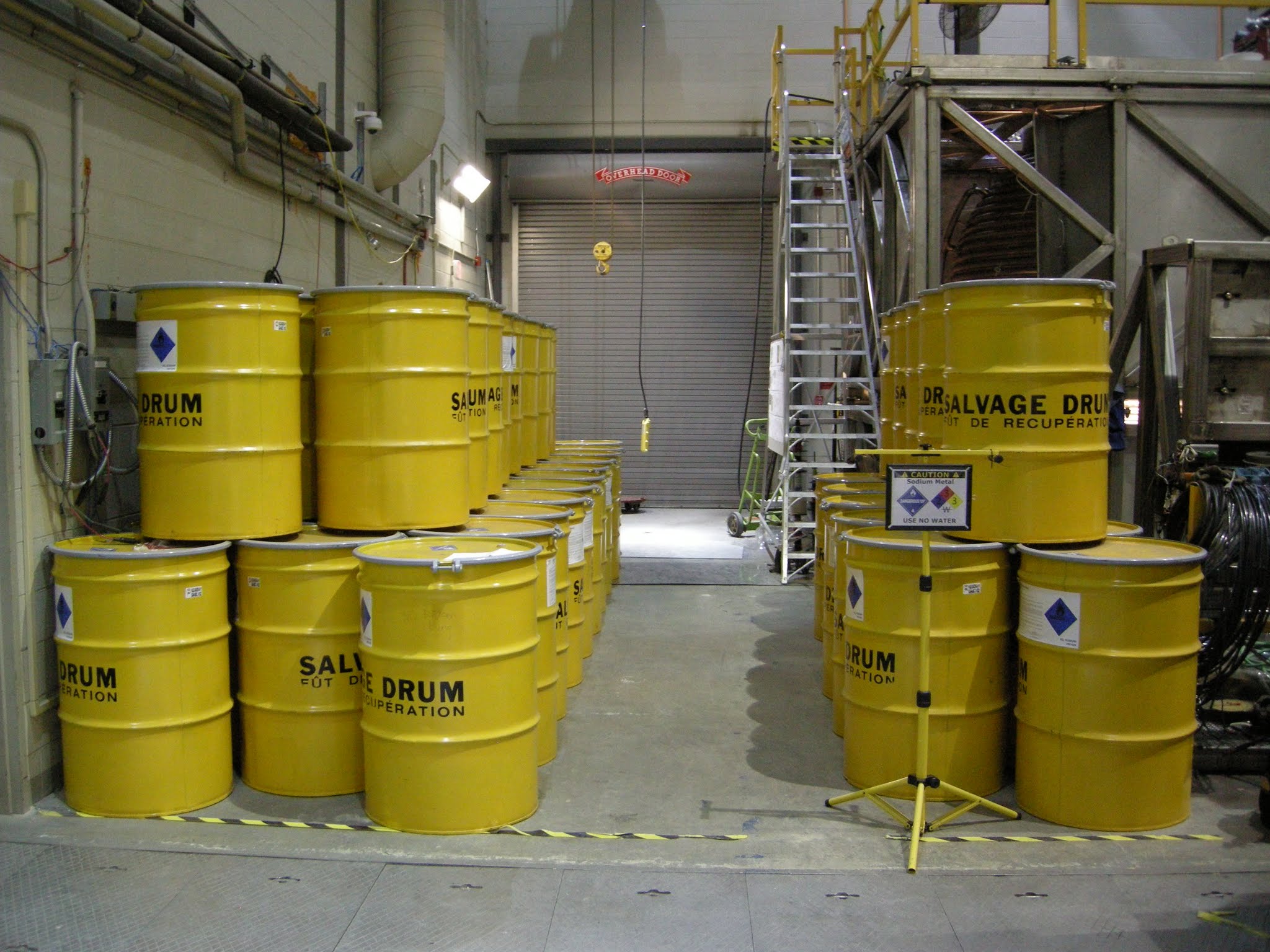Planetary Fluid Mechanics in the Lab
Daniel S. ZimmermanSantiago A. Triana
Daniel P. Lathrop
Work made possible by:
NSF/MRI EAR-0116129
NSF EAR-1114303
University of Maryland Physics/IREAP/Geology
The Experiment

Stats:
- Outer sphere maximum speed $$\Omega/2\pi=4\mathrm{Hz}$$
- Inner sphere maximum speed $$\Omega_\mathrm{i}/2\pi=\pm20\mathrm{Hz}$$
- Total rotating mass: 20 tons
- 7 ton, 3m diameter shell
- 13 tons fluid (water, sodium metal)
- Two 250kW (350HP) motors
- Hot oil system: 120kW heating + 500kW cooling
Outer sphere at two revolutions/second
Dynamos
Westinghouse

Homogeneous

Glatzmaier and Roberts Reversing Dynamo Simulation 1995
Why 13 Tons of Spinning Sodium?


- Sodium best chance for liquid metal dynamo.
- Fast rotation is very important in planetary dynamo.
Geometry & Forcing

Design:
- Geometrically similar to Earth's core: $$\Gamma = r_\mathrm{i}/r_\mathrm{o} = 0.35$$
- Differential rotation to provide stirring in rotating frame.
- Simple geometry amenable to simulation
- Common features with planetary core, not a scale model.
Dimensionless Numbers
$$Ro = \frac{\Delta\Omega}{\Omega}, |Ro|<100 $$
$$Re = \frac{\Delta\Omega(r_o-r_i)^2}{\nu}, Re\sim10^8$$
$$Rm = \frac{\Delta\Omega(r_o-r_i)^2}{\eta}, Rm\sim10^3$$
$$Pm = \frac{\nu}{\eta} = \frac{Rm}{Re} \sim 10^{-5}$$
$$S = \frac{B_0 L}{\eta\sqrt{\rho \mu_0}}, S\sim6$$
$$\Lambda = \frac{B_0^2}{\rho\mu_0\eta\Omega},\Lambda\sim15$$
$$Ha = \frac{B_0 L}{\sqrt{\rho \mu_0 \eta \nu}},Ha\sim2\times10^3$$
Hydrodynamic Preview
- Torque, G: common turbulent scaling with Re
- State changes: dozens of states depending on Ro
- Turbulent rotating shear flow torque:
$$\small G(Re,Ro)=f(Ro)g(Re)$$
$$\small g(Re)=C_f Re^2, Re\rightarrow\infty$$
Torque vs. Reynolds Number, Outer Stationary
Torque vs. Reynolds Number, Outer 1.25Hz
- $$Ro = \Delta\Omega/\Omega$$
Torque and Azimuthal Velocity - State Changes
$$\small Ro = 2.33$$Probability Distribution of Torque
$$\small Ro = 2.13$$Different Large-Scale Flow States
Turbulent Torque Rossby Dependence
Magnetohydrodynamic Preview
- Differential rotation generates strong internal azimuthal field (strong ω-effect)- important for dynamo.
- Large Ro-dependence from hydrodynamic state changes: ω-effect peaks at Ro=+6.
- Strong applied field: new states, reduced ω-effect, field bursting with a "dynamo-like" feedback loop.
Internal Field and External Gauss Coefficients

$$\scriptsize B_l^m = l(l+1)g_l^m$$
Internal Magnetic Field, "Weak" Applied Field
$$\small S=0.39$$Internal Magnetic Field vs. Applied Field
State Changes at Strong Field
Field Bursts
$$\small S=3.5, Ro = +6, Rm = 477$$Summary
- Torque, G: common turbulent scaling with Re
- Dozens of turbulent flow states depending on Ro
- Turbulent rotating shear flow torque:
$$\small G(Re,Ro)=f(Ro)g(Re)$$
$$\small g(Re)=C_f Re^2, Re\rightarrow\infty$$ - Differential rotation gives strong ω-effect- important for dynamo.
- Large Ro-dependence of ω-effect due to hydrodynamic state changes.
- Strong applied field: new states, reduced ω-effect, field bursting (Ro=+6) with a "dynamo-like" feedback loop.
- Opportunities for good quantitative tests for spherical turbulent codes (fluid Rossby relatively small!)
